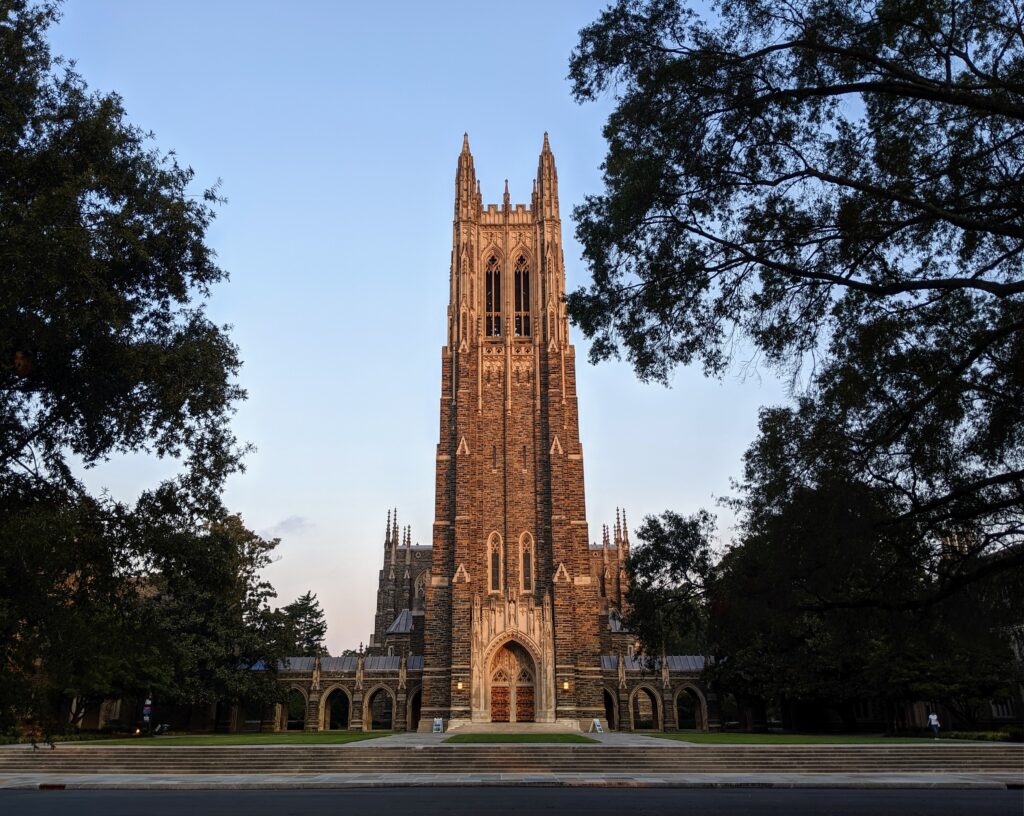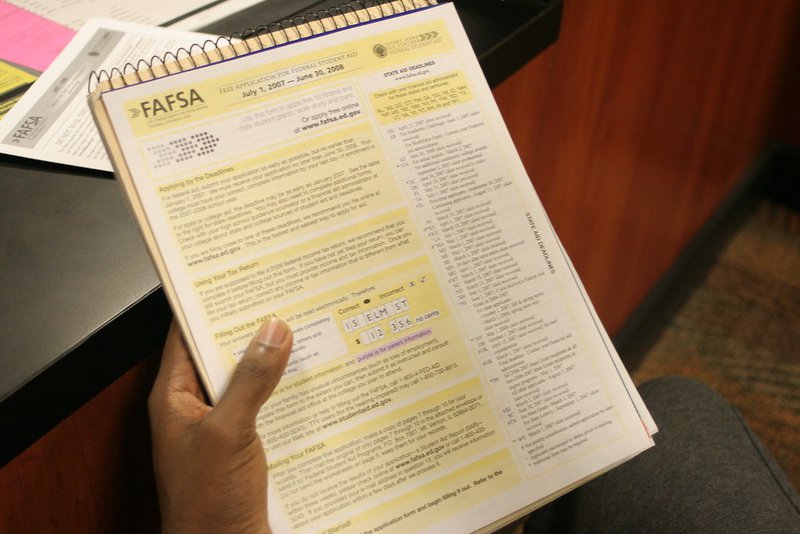
Although it’s been nearly 12 years since I applied to Duke University, the experience remains vivid in my memory. In this post, I’ll share my personal experience and tips for paying for college, from saving up in high school to receiving Duke University financial aid and finding on-campus jobs. By harnessing Duke University’s generous financial aid program and planning strategically, I was able to graduate debt-free, enabling me to plan my future without the burden of repaying loans.
Everyone has a different path to college, and the nuances of your situation will inevitably be unique. Though the college admissions process can be emotional and time-consuming (especially on the financial aid front!), it remains worth the effort. By applying for financial aid, students can reduce the debt burden of higher education and gain more financial freedom upon graduation.
For more guidance on financial aid and the college application process in general, sign up for a monthly plan to work with an admissions coach 1-on-1.
Before Duke: Saving For College In High School
When I was in high school and my family began to think about college, the impending price tag was top of mind. Although my high school had a unique partnership with the State of North Carolina to cover the tuition costs for any students who attended public colleges, I had always expected to enroll in a private university and, as a result, foot a large bill.
Since my parents were wary of student debt, they had made an effort to start saving up for my college costs when I began high school, admittedly later than most. While we expected financial aid and scholarships to cover a significant portion of the costs, we knew that we would need to contribute some amount of money. Moreover, we had assessed the peripheral costs of college, especially pertaining to applications and visiting schools.
From early on, I knew where I wanted to study. Still, since college applications can cost upwards of $80/school (without fee waivers), we had set aside specific funds for such expenses. Similarly, I began to search for college scholarships early. Although no scholarship candidate’s profile matched my own, looking at these profiles helped me to strategize within my own situation. This informal “market research” also taught me that university-provided financial aid would be the best path towards paying for college.

Deciding on Duke
Growing up in Durham, I always had an inkling that I would end up at Duke. Having been involved in the University’s broader community since middle school, first through their Talent Identification Program and then via their youth volunteer programs, I had the privilege to experience the University close-up and assess all that it had to offer its students.
Duke was also launching a neuroscience major, my intended major, for my entering class. Though I ended up studying International Comparative Studies and Political Science, this nonetheless strengthened my desire to go to Duke.
When the time to apply to college came, I decided to apply to Duke Early Decision (ED). After interviewing with an alum in November, I learned on December 10, 2009 that I had been accepted. With Duke’s Early Decision process being binding, my college admissions journey came to a close.
Focusing my efforts on an ED school saved me money as well as time. Since application fees can add up (currently at $85 for Duke), my one-and-done process likely spared me hundreds of dollars!

Duke Financial Aid
Going to Duke, at least on paper, isn’t cheap. With tuition nearing $60,000/year, and another $20,000/year for room and board, my family was shocked by the price. Additionally, due to unexpected external factors, I was unable to apply for financial aid for my first year of college.
Despite Duke being a need-blind school, I would be straddled with a hefty bill for at least one year. Luckily, my parents, who ran a small business, were able to tighten their belts and fund my first year at Duke out-of-pocket.
However, as my first year came to a close, I started to have conversations with Duke’s financial aid office and learned that I could still apply for aid. It’s never too late, it seems! While ecstatic, navigating the financial aid process was new to me and my parents, as we had never encountered the Free Application for Federal Student Aid (FAFSA).
1. Filling out the FAFSA for the first time
Ultimately, the process turned out to be simpler than we had imagined. We broke up the FAFSA into bite-sized pieces, gathering information on tax filings, living expenses, education expenses for my sister, and my parent’s business paperwork. The forms quickly became more manageable. Additionally, my parent’s meticulous filing habits proved incredibly helpful — I was able to get key financial documents (W2s, bank information, etc.) from centralized files in my house.
Still, there were moments when we had specific questions about the FAFSA. Luckily, through internet sleuthing and some calls to Duke’s financial aid counselors, we completed the forms with minimal stress. Once submitted, the process moved fairly quickly. The Duke team regularly communicated with me regarding what additional documents they needed, and, eventually, how much aid I would receive.
Financial Aid yearly renewal
Ultimately, between my financial aid and the cost savings that came from being a Resident Assistant (more on this later), my Expected Family Contribution (i.e. how much my family would need to cover) was quite minimal and easy to cover with on-campus and summer jobs.
Though financial aid has to be renewed every year, subsequent FAFSA submissions were a lot more seamless. Since the FAFSA portal saved year-to-year information, and the Duke financial aid office was always willing to help, paying for Duke became much easier.
Duke and financial aid today
Since my graduation, Duke has become even more generous with financial aid, continuing its commitment to be need-blind for U.S. citizens, permanent residents, and undocumented students. The University caps the maximum total loan burden for students at $20,000, although many graduate with substantially less. Additionally, families with a total annual income of $60,000 or less have no expected parent contribution. The number and types of merit scholarships have also increased, although financial aid remains the most common route for students.

Dealing With College Expenses at Duke
Even after covering tuition and housing, additional college expenses always seem to arise. In my case, major costs came from transportation (i.e. parking and gas), textbooks, and eating at restaurants. My peers from outside the area also often footed large flight bills (although Duke does provide aid to cover travel).
Paying for Textbooks
During my first year of college, I bought all of my textbooks from the campus bookstore in mint condition. This was a big, expensive mistake. Not only could textbooks be purchased online, but the used versions were more than sufficient.
Eventually, however, I learned that Duke’s extensive library network, which includes the libraries of other universities, was a great resource. I could easily access readings for free, allowing me to cut textbook costs entirely. Once I learned how to use the library system, I never bought another textbook.
Paying for Food
I had a meal plan at Duke, and the University has a robust dining program (which includes access to local restaurants). Still, eating off-campus remained a weakness of mine. Since I had easy access to Durham’s growing food scene, I found myself eating out quite often. No matter how great campus food may be, the allure of restaurants is hard to beat. Late-night dashes for a burger or Chinese food, while scrumptious, do become an expensive habit.
I eventually set boundaries on eating out, limiting it to 1-2 times a week and taking greater advantage of on-campus dining. Although difficult at first, creating similar expectations with my friends helped me cut costs.

Working On-Campus Jobs at Duke
When you add up the cost of textbooks, food, and other expenses, the price of college creeps up. To cover these expenses, I, like many students, opted to work on campus.
Two jobs defined my undergrad experience. First, I served as a Resident Assistant (RA) for three years, overseeing a cohort of first-year students. Aside from the joy of helping first-years transition to college, being an RA was a great way to reduce tuition costs. The role covered both room and board (i.e. a single room and a meal plan) and provided a nominal stipend.
I also worked at Perkins Library, where I would help patrons with all their library-related needs. The hours were extremely flexible, and getting an “in” with the librarians was tremendously valuable when it came to research projects. My friends had similar experiences with on-campus jobs. Some served as research assistants to professors, worked for the development office, or tutored fellow students, among other things.
Deciding on Summer Activities
Like all students, I tried to find a balance between productivity and pleasure during my summers. With three summers until graduation, I knew every summer had to be meaningful towards my post-graduation goals.
At Duke, students generally follow a similar approach towards the summers:
- The summer after the first year is used to take courses relevant to your degree so you do not have to “overload” on courses during the academic year.
- The summer after the second year is used to study abroad or do Duke Engage (the University’s flagship service program). Financial aid usually extends to study abroad programs, and Duke Engage is free for all students.
- The summer after the third year is used for internships that will prepare you for your potential career after Duke.
I took a similar approach to my summers. However, I did not study abroad or do Duke Engage due to some personal logistical challenges.
For my first summer of college, I took Organic Chemistry on campus, hoping to make headway on the pre-med curriculum. I also worked as a Campus Tour Guide for the Admission Office. The pay was good, the hours were flexible, and it was a great way to share my love for Duke with prospective students!
In my second summer, I decided to link my RA experience with my passion for working with students and became a Residential Counselor for the Duke Talent Identification Program. I spent the summer at Trinity University in San Antonio, Texas working with gifted students. Since I received a paycheck along with free housing and food, I also saved money for the fall semester.
Finally, during my third summer, I took the professional experience route. After multiple on-campus rounds of recruiting and interviews, I spent my summer interning at Blue Cross and Blue Shield of North Carolina, an insurance provider, where I worked on portfolio management initiatives. Although I did not pursue a career in insurance, this experience allowed me to get a taste of a “real” job while also saving money for senior year.

Expenses During My Final Year at Duke
My final year of college brought a surprising slew of new expenses. The job recruiting process necessitated new professional attire as well as funds for traveling between interviews. Other expenses came from my Spring Break trip to South Korea, as well as from random excursions with friends. Additionally, while graduation week is a super exciting time, it’s also expensive. From graduation regalia fees to travel and dining expenses for family, the costs of celebrating can be great.
Ultimately, despite the cost, these efforts were an essential part of my college experience. My only piece of advice to my younger self would have been to plan for this throughout the years!

Key Takeaways
By harnessing Duke’s generous financial aid, as well as planning strategically, I was able to graduate debt-free. This enabled me to plan my career without the stress and burden of student loans. Of the lessons I learned during my financial aid process, three stand-out:
1. Start Early
You can never start thinking about (and saving for) college too early. Research the types of schools you may want to attend, how much they cost, and the financial aid process. Building awareness early (and preparing your documents in advance) ensures that things run smoothly. An early start also allows you to gain important insight on which scholarships may be available to you.
2. Find Alternate Sources of Funds
While University aid is one source of money, there are many other ways to pay for (or subsidize) your education. From external scholarships to on-campus jobs to summer internships, there is money out there if you are willing to put in the time and effort.
3. Ask Questions
From high school through my first year of college, I hesitated to engage with the financial aid office. Yet when I did, they provided ample, personalized support and walked me through how to manage my college finances. Ultimately, the financial aid office exists to help students make college more affordable — reach out to them with questions and they will try to help!
This informational essay was written by Gagan Vaseer, Duke University ‘13. If you want to get help with the college application process from Gagan or other CollegeAdvisor.com Admissions Experts, register with CollegeAdvisor.com today.
